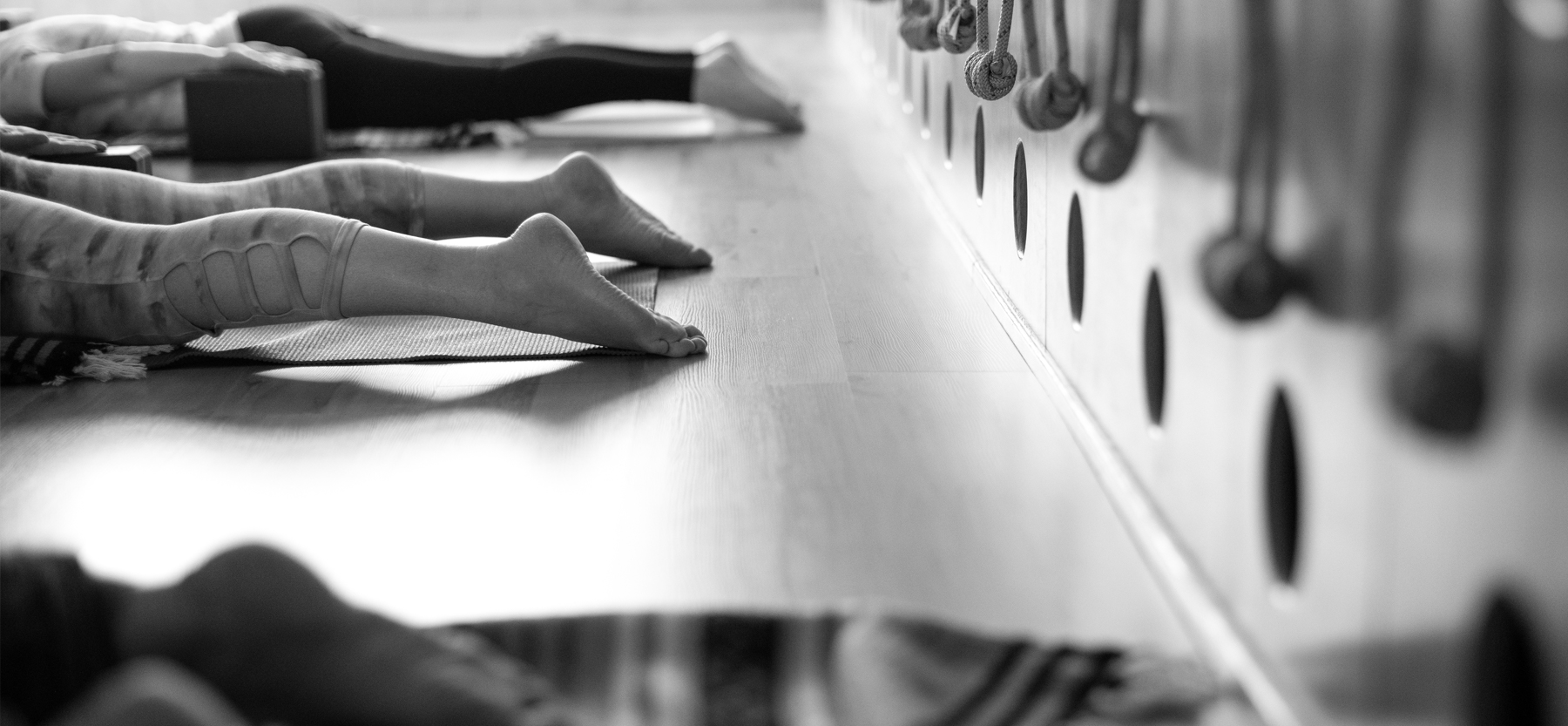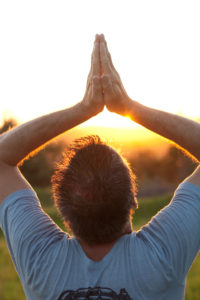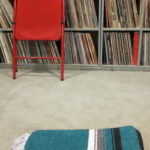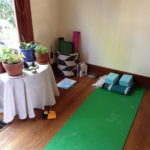Omaha Yoga Path Post
Deep Relaxation
Deep Relaxation Practice
At the Yoga Path we are practicing being with the body. One of the ways to best do this to take time to rest and intentionally making a time to rest, and totally relax. Here are three links to help you do this. Please set aside a time to lie down and devote yourself to this practice. Turn off everything and make certain you give you time to taking care of yourself
- This is a 46 minute total relaxation narrated by Sr. Chau Nghiem
- This is a 35 minute total relaxation narrated by Sr. Dan Nghiem
- This is an 11 minute total relaxation narrated by Sr. Chan Khong
They are from the Plum Village tradition. Enjoy!
Why do this?
Resting is a precondition for healing. When animals in the forest get wounded, they find a place to lie down, and they rest completely for many days. They don’t think about food or anything else. They just rest and they get the healing they need. When we humans become overcome with stress, we may go to the pharmacy and get drugs, but we don’t stop. We don’t know how to help ourselves.
Stress accumulates in our body. The way we eat, drink, and live takes its toll on our well-being. The practice of deep relaxation provides an opportunity for our body to rest, to heal, and to be restored. We relax our body, give our attention to each part in turn, and send our love and care to every cell.
If you have trouble sleeping enough, the deep relaxation practice can compensate. Lying awake on your bred, you may like to practice total relaxation and follow your breathing in and breathing out. Sometimes it can help you to get some sleep. But even if you don’t sleep, the deep relaxation practice can help because it can nourish you and allow you to rest.
Mindful breathing, total relaxation of the body can be done at home at least once a day. It may last twenty minutes or longer. We can practice it either with a group, with our family or alone. When we do deep relaxation in a group, one person can guide the exercise using the guide below or some variation of it. When you do deep relaxation on your own, you may like to record an exercise to follow as you practice. One member of the family can lead the session for the whole family, perhaps in the living room.
Significance of 108
The Significance of the number 108?
Why do we do 108 Sun Salutations in Yoga…?
Here are many of the symbolism for 108:
A japa mala or mala is an eastern rosary with 108 beads. The mala is used both in Hinduism and Buddhism for counting mantras, chants or prayers. 108 has been a sacred number for a long time, and this number is explained in many different ways.
Traditionally, Buddhist have 108 beads, representing the 108 human passions that Avalokiteshvara assumed when telling the beads. This number ensures a repetition of a sacred mantra at least 100 times, the extra beads allowing for any omissions made through absentmindness in counting or for loss or breakage of beads.
Sometimes smaller divisions can be used: 108 is divided in half, third, quarter, or twelfth, so some malas have 54, 36, 27, or 9 beads.
Regardless of the meaning of 108, it is important that if a mala is used to count mantras, the mantra be given sincerity, devotion, feeling, and full attention.
108 may be the product of a precise mathematical operation (e.g. 1 power 1 x 2 power 2 x 3 power 3 = 108) which was thought to have special neurological significance.
- POWERS of 1, 2 & 3 IN MATH: 1 to 1st power=1; 2 to 2nd power=4 (2×2); 3 to 3rd power=27 (3x3x3). 1x4x27=108
- SANSKRIT ALPHABET: There are 54 letters in the Sanskrit alphabet.
Each has masculine and feminine, shiva and shakti. 54 times 2 is 108. - HARSHAD NUMBER: 108 is a Harshad number, which is an integer divisible by the sum of its digits (Harshad is from Sanskrit, and means “great joy”)
- DESIRES: There are said to be 108 earthly desires in mortals.
- LIES: There are said to be 108 lies that humans tell.
- DELUSIONS: There are said to be 108 human delusions or forms of ignorance.
- 9 x 12: Both of these numbers have been said to have spiritual significance in many traditions. 9 times 12 is 108. Also, 1 plus 8 equals 9. That 9 times 12 equals 108.
- TIME: Some say there are 108 feelings, with 36 related to past, 36 related to present, and 36 related to future.
ASTROLOGY: There are 12 constellations, and 9 arc segments called namshas or chandrakalas.
9 times 12 equals 108. Chandra is moon, and kalas are the divisions within a whole.
PLANETS AND HOUSES: In astrology, there are 12 houses and 9 planets. 12 times 9 equal 108.
Gopis of Krishna: In the Krishna tradition, there were said to be 108 gopis or maid servants of Krishna.
SUN AND EARTH: The diameter of the sun is 108 times the diameter of the Earth.
NUMERICAL SCALE: The 1 of 108, and the 8 of 108, when added together equals 9, which is the number of the numerical scale, i.e. 1, 2, 3 … 10, etc., where 0 is not a number.
DANCE: There are 108 forms of dance in the Indian traditions.
PYTHAGOREAN: The nine is the limit of all numbers, all others existing and coming from the same. ie: 0 to 9 is all one needs to make up an infinite amount of numbers.
STAGES OF THE SOUL: Atman, the human soul or center goes through 108 stages on the journey.
SRI YANTRA: On the Sri Yantra there are marmas where three lines intersect, and there are 54 such intersections. Each intersections has masculine and feminine, shiva and shakti qualities. 54 x 2 equals 108. Thus, there are 108 points that define the Sri Yantra as well as the human body.
ANAHATA (HEART) CHAKRA: The chakras are the intersections of energy lines, and there are said to be a total of 108 energy lines converging to form the heart chakra. One of them, sushumna leads to the crown chakra, and is said to be the path to Self-realization.
MARMAS: Marmas or marmastanas are like energy intersections called chakras, except have fewer energy lines converging to form them. There are said to be 108 marmas in the subtle body.
MERU: This is a larger bead, not part of the 108. It is not tied in the sequence of the other beads. It is the guiding bead, the one that marks the beginning and end of the mala.
BUDDHA’S FOOTPRINT: All Buddhists accept the Buddha Footprint with its 108 Auspicious Illustrations. These areas are considered to have been marked on the Buddha’s left foot when his body was discovered.
BUDDHISM: 108 beads on the Hindu maalaa {rosary} 108 Arhats or Holy Ones
HINDUISM: 108 Gopis {consorts} of Lord Krishna 108 Holy places for Vaishnavas 108 beads on the Japa maalaa {rosary} 108 Upanishads 108 Divyadeshes – Divine or Sacred Tirtha throughout India and Nepal 108 sacred water taps in Muktinath – Nepal
ISLAM: The number 108 is used in Islam to refer to God.
JAIN: In the Jain religion, 108 are the combined virtues of five categories of holy ones, including 12, 8, 36, 25, and 27 virtues respectively.
SIKH: The Sikh tradition has a mala of 108 knots tied in a string of wool, rather than beads.
Chinese: The Chinese Buddhists and Taoists use a 108 bead mala, which is called su-chu, and has three dividing beads, so the mala is divided into three parts of 36 each.
SHOSHU BUDDHIST: 108 beads in their malas.
They implement the formula: 6 x 3 x 2 x3 = 108 6 senses [sight, sound, smell, taste, touch, thought]
3 aspects of time [past, present, future]
2 condition of heart [pure or impure]
3 possibilities of sentiment [like, dislike, indifference]
TAI CHI CHU’AN
108-form Wu family Tai Chi Chuan
The different slow motion solo sequences of T’ai Chi Ch’uan are the best known manifestation of T’ai Chi for public. In English, called the hand form or just the form; in Mandarin it is called ch’uan: 拳 They are performed slowly by beginners and are said to promote concentration, condition the body and acquaint students with the inventory of motion techniques for more advanced styles of martial arts training.
TANTRA SHASTRA: 108 Pitha {Sacred Places} The story goes that Lord Shiva was in deep and incessant meditation. His asceticism was creating great heat in the universe. All existence was in peril and Lord Brahma was deeply concerned.
Lord Brahma asked the Mother of the Universe, Maa Shakti, to use her strength and wile to seduce Lord Shiva. Maa Shakti agreed and was born as Sati, daughter of Shri Daksha. Lord Shiva was so entranced by Sati’s asceticism and extraordinary beauty that he took human form and they were married. Years later, at a feast, Sati’s father insulted Lord Shiva. Sati was so humiliated that she began a deep meditation which led to her immolation. Lord Shiva was completely heartbroken. He reached into the sacrificial fire and pulled out as much of His beloved’s body as he could grab. As He ascended to heaven, bits of Sati’s body fell to earth. 108 bits to be precise! In time, these places were acknowledged and worshipped.
SANATANA DHARMA: In a book by Khurana, the explanation mirrors original Vedic justifications: A circle has 360 degrees, which when multiplied by 60 gives 21,600 minutes in a circle. 60 comes from the 60 ‘ghatis’ which Sanatana Dharmiks believe in. One ghati is equal to 24 minutes and 60 ghatis come to 24 hours.
One ghati is divided into 60 parts or ‘palas’. So the 60 ghatis multiplied by 60 palasa comes to 3,600. This is further multiplied by 60 (becase a pala contains 60 vipalas) which gives us 21,600. Half of this is for the day, and the other half for the night. So, 21,600 divided by 2 gives us 10,800. For practical purposes, we use 108.
Using the number 108 helps us coordinate the rhythm of time and space & we remain in harmony with the spiritual powers of nature.
108 UPANISHADS FROM MUKTIKOPANISHAD: Rigveda(10): Aitareya , Atmabodha, Kaushitaki, Mudgala, Nirvana, Nadabindu, Akshamaya, Tripura, Bahvruka, Saubhagyalakshmi.
Yajurveda(50): Katha, Taittiriya , Isavasya , Brihadaranyaka, Akshi, Ekakshara, Garbha, Prnagnihotra, Svetasvatara, Sariraka, Sukarahasya, Skanda, Sarvasara, Adhyatma, Niralamba, Paingala, Mantrika, Muktika, Subala, Avadhuta, Katharudra, Brahma, Jabala, Turiyatita, Paramahamsa, Bhikshuka, Yajnavalkya, Satyayani, Amrtanada, Amrtabindu, Kshurika, Tejobindu, Dhyanabindu, Brahmavidya, YogakundalinI, Yogatattva, Yogasikha, Varaha, Advayataraka, Trisikhibrahmana, mandalabrahmana, Hamsa, Kalisantaraaa, Narayana, Tarasara, Kalagnirudra, Dakshinamurti, Pancabrahma, Rudrahrdaya, SarasvatIrahasya.
SamaVeda(16): Kena, Chandogya, Mahat, Maitrayani, Vajrasuci, Savitri, Aruneya, Kundika, Maitreyi, Samnyasa, Jabaladarsana, Yogacudaman, Avyakta, Vasudevai, Jabali, Rudrakshajabala.
Atharvaveda(32): Prasna , Mandukya, Mundaka, Atma, Surya, Narada-Parivrajakas, Parabrahma, Paramahamsa-Parivrajakas, Pasupatha-Brahma, Mahavakya, Sandilya, Krishna, Garuda, Gopalatapani, Tripadavibhuti-mahnarayana, Dattatreya, Kaivalya, NrsimhatapanI, Ramatapani, Ramarahasya, HayagrIva, Atharvasikha, Atharvasira, Ganapati, Brhajjabala, Bhasmajabala, Sarabha, Annapurna, TripuratapanI, Devi, Bhavana, SIta.
Joseph Campbell says it’s 1+0+8 = 9, the number of the goddess.
Or one can look at 1, 0, and 8 as:
1 = God or higher Truth
0 = emptiness or completeness in spiritual practice,
8 = infinity or eternity
Tea on the Brain
Been a long time since making an entry in this category — tea, but I always marvel at the relationship of tea in Buddhism, Yoga, and meditation. Now here is a neurological explain for human predilection for Camellia sinensis.
[vimeo 114499613 w=500 h=375]
Mindfulness Resources
The Miracle of Mindfulness: An Introduction to the Practice of Meditation by Thich Nhat Hanh
When Things Fall Apart: Heart Advice for Difficult Times by Pema Chodron
Wherever You Go, There You Are by Jon Kabat-Zinn
The Wise Heart: A Guide to the Universal Teachings of Buddhist Psychology by Jack Kornfield
The Science of Enlightenment by Shinzen Young
Breakfast with Buddha by Roland Merullo
Falling Upward: A Spirituality for the Two Halves of Life by Richard Rohr
Be Free Where You Are by Thich Nhat Hanh and Sister Chan Khong
Making Space: Creating a Home Meditation Practice by Thich Nhat Hanh
No Time to Lose: A Timely Guide to the Way of the Bodhisattva by Pema Chodron
Bringing Yoga to Life: The Everyday Practice of Enlightened Living by Donna Farhi
Spring Mindfulness Retreat
Here is the announcement about Spring Mindfulness Retreat 2014 sponsored by the Honey Locust Sangha / Omaha Community of Mindful Living.
George Orwell’s Tea
Those of us who come to the Yoga Path, have come to appreciate the tea ceremony at the end of our classes. It is an integral part of the practice. Yet it’s very difficult in America, the land of coffee, to find a decent cup of tea out in the world. One of my students recently shared this story from Orwell with me. It captures much of what I think goes into a good cup of tea. If there are an isolated tea drinkers out there in this coffee waste land, write in. You’re not alone.
A Nice Cup of Tea
by George Orwell
Saturday Essay, Evening Standard, 12 January 1946
If you look up ‘tea’ in the first cookery book that comes to hand you will probably find that it is unmentioned; or at most you will find a few lines of sketchy instructions which give no ruling on several of the most important points.
This is curious, not only because tea is one of the main stays of civilisation in this country, as well as in Eire, Australia and New Zealand, but because the best manner of making it is the subject of violent disputes.
When I look through my own recipe for the perfect cup of tea, I find no fewer than eleven outstanding points. On perhaps two of them there would be pretty general agreement, but at least four others are acutely controversial. Here are my own eleven rules, every one of which I regard as golden:
First of all, one should use Indian or Ceylonese tea. China tea has virtues which are not to be despised nowadays – it is economical, and one can drink it without milk – but there is not much stimulation in it. One does not feel wiser, braver or more optimistic after drinking it. Anyone who has used that comforting phrase ‘a nice cup of tea’ invariably means Indian tea.
Secondly, tea should be made in small quantities – that is, in a teapot. Tea out of an urn is always tasteless, while army tea, made in a cauldron, tastes of grease and whitewash. The teapot should be made of china or earthenware. Silver or Britannia-ware teapots produce inferior tea and enamel pots are worse; though curiously enough a pewter teapot (a rarity nowadays) is not so bad.
Thirdly, the pot should be warmed beforehand. This is better done by placing it on the hob than by the usual method of swilling it out with hot water.
Fourthly, the tea should be strong. For a pot holding a quart, if you are going to fill it nearly to the brim, six heaped teaspoons would be about right. In a time of rationing, this is not an idea that can be realised on every day of the week, but I maintain that one strong cup of tea is better than twenty weak ones. All true tea-lovers not only like their tea strong, but like it a little stronger with each year that passes – a fact which is recognized in the extra ration issued to old-age pensioners.
Fifthly, the tea should be put straight into the pot. No strainers, muslin bags or other devices to imprison the tea. In some countries teapots are fitted with little dangling baskets under the spout to catch the stray leaves, which are supposed to be harmful. Actually one can swallow tea-leaves in considerable quantities without ill effect, and if the tea is not loose in the pot it never infuses properly.
Sixthly, one should take the teapot to the kettle and not the other way about. The water should be actually boiling at the moment of impact, which means that one should keep it on the flame while one pours. Some people add that one should only use water that has been freshly brought to the boil, but I have never noticed that it makes any difference.
Seventhly, after making the tea, one should stir it, or better, give the pot a good shake, afterwards allowing the leaves to settle.
Eighthly, one should drink out of a good breakfast cup – that is, the cylindrical type of cup, not the flat, shallow type. The breakfast cup holds more, and with the other kind one’s tea is always half cold – before one has well started on it.
Ninthly, one should pour the cream off the milk before using it for tea. Milk that is too creamy always gives tea a sickly taste.
Tenthly, one should pour tea into the cup first. This is one of the most controversial points of all; indeed in every family in Britain there are probably two schools of thought on the subject.
The milk-first school can bring forward some fairly strong arguments, but I maintain that my own argument is unanswerable. This is that, by putting the tea in first and stirring as one pours, one can exactly regulate the amount of milk whereas one is liable to put in too much milk if one does it the other way round.
Lastly, tea – unless one is drinking it in the Russian style – should be drunk without sugar. I know very well that I am in a minority here. But still, how can you call yourself a true tea-lover if you destroy the flavour of your tea by putting sugar in it? It would be equally reasonable to put in pepper or salt.
Tea is meant to be bitter, just as beer is meant to be bitter. If you sweeten it, you are no longer tasting the tea, you are merely tasting the sugar; you could make a very similar drink by dissolving sugar in plain hot water.
Some people would answer that they don’t like tea in itself, that they only drink it in order to be warmed and stimulated, and they need sugar to take the taste away. To those misguided people I would say: Try drinking tea without sugar for, say, a fortnight and it is very unlikely that you will ever want to ruin your tea by sweetening it again.
These are not the only controversial points to arise in connection with tea drinking, but they are sufficient to show how subtilised the whole business has become.
There is also the mysterious social etiquette surrounding the teapot (why is it considered vulgar to drink out of your saucer, for instance?) and much might be written about the subsidiary uses of tealeaves, such as telling fortunes, predicting the arrival of visitors, feeding rabbits, healing burns and sweeping the carpet.
It is worth paying attention to such details as warming the pot and using water that is really boiling, so as to make quite sure of wringing out of one’s ration the twenty good, strong cups of that two ounces, properly handled, ought to represent.

















